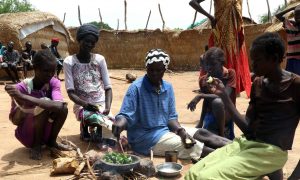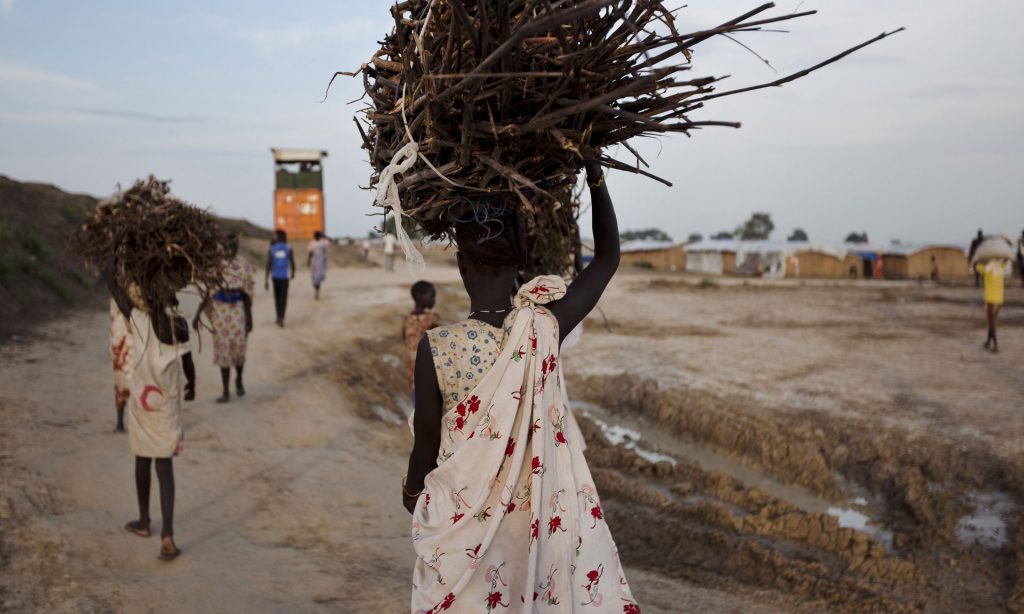Maziku arrived at Uganda’s Nyumanzi Transit Centre in June this year six months pregnant and with only the dress she was wearing.

“I wish I had managed to carry clothes. At least I would use those to cover my child,” said the 18-year-old.
Like many other expectant mothers who fled South Sudan’s violence, she had little time to think of anything but escape. When she got to the border, she was brought to this overcrowded settlement in Uganda’s northern Adjumani district.
According to the Norwegian Refugee Council, 1,700 South Sudanese arrive in Uganda each day. The country currently hosts approximately 315,000 refugees and asylum seekers from its troubled neighbour.
Nyumanzi is one of four transit centres set up to cope with the flow. The wait is meant to be for just a few weeks before the refugees are relocated to permanent settlements in Adjumani.
But some have stayed for as long as three months. As a result, a centre designed to hold 2,000 people can have a population of several times that.
Survival is basic: a daily ration of posho – maize meal porridge – and beans, inadequate pit latrines, and not enough water. Diseases such as cholera and malaria are commonly reported.
“For expectant mothers, the situation is critical,” said William Drani, coordinator for the Nyumanzi Health Centre.
At transit camps, maternal mortality increases “dramatically” as a result of “poor nutrition (expectant mothers are given the same ration of posho and beans), walking long distances to the health centre, poor health infrastructure and lack of family [support],” he told IRIN.
Albert Alumgbi, assistant settlement commander in the office of the prime minister, and stationed at Nyumanzi, said the centre’s sole clinic is only a referral facility, and also caters to the local population.
“This is an emergency situation,” Alumgbi told IRIN. “Sometimes there are no medical personnel at the clinic to assist them, especially during the evening.”
The centre serves more than 180 patients per day, and since June that has included a total of 380 expectant mothers.
Prisca Mindraa, from Pagan in South Sudan, is six months pregnant with her seventh child. She has only been to the health centre once since she arrived three months ago.
“I have to wake up early in the morning and walk a long distance [and queue] in order to arrive at the health centre on time before they close at midday,” she explained.
Pregnant and labouring
Expectant mothers are advised to visit at least three times during their pregnancy. But aside from the more-than-two-kilometre walk to the centre and the long queues, they also have to contend with gender norms, which leaves all domestic chores to women.
“I have to fetch water and queue for food for the family even when my husband is there,” said Limio Nite, who is expecting her third child.
Vicky Amondi, a midwife at the health centre, acknowledges that development partners provide “dignity packs” to mothers after delivery, including soap, underwear, and a bucket.
But she says what’s also needed is special food for pregnant mothers, and clothes for the babies once they deliver.
“Organisations that support refugees should provide special food packs for pregnant women at the camps, and assist with clothes for the newborn babies, as the dignity pack only has a shawl to cover the baby,” she said.
To earn some money, women – even if they are pregnant – weed the fields of Ugandan farmers, or collect firewood to sell in the camp for 15 US cents a bundle.

